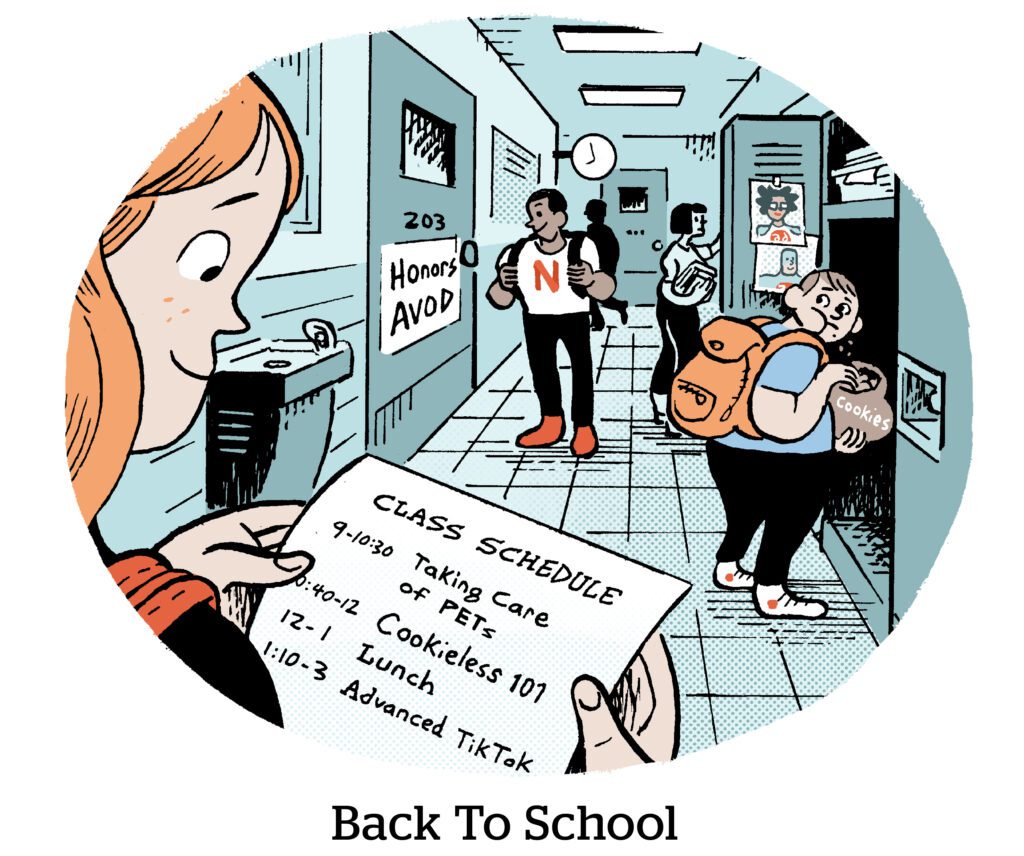Vertical video won the user-generated content wars long ago. If you see someone filming with their phone in landscape, they probably have a hotmail email address, too.
Snapchat and Instagram may have shifted the way most people (or at least, most young people) take photos and videos, but it took TikTok to shift the way YouTube and its advertiser base use the Google platform.
YouTube announced a new suite of vertical video production tools designed for Shorts, its TikTok-like short-form video feed, to create much more vertical video on the platform.
“We have seen an increase in the percentage of campaigns that are providing vertical video, which I think speaks to the trend of more creative coming through vertical,” Nicky Rettke, YouTube ads director of product management, told AdExchanger. “But I do think that it needs a nudge.”
One new YouTube solution is an easy fix for the fact that many YouTube advertisers film in landscape – traditionally studio-style production like a TV commercial – and already have libraries of landscape videos: an instant flip-it-to-vertical video ad creator. YouTube’s machine learning automatically identifies which parts of a landscape video it should hone in on to maintain the video’s quality in a vertical format. If the whole landscape video is important for the content, Rettke said YouTube’s AI will blur the background to keep everything in focus within the thinner vertical frame.
YouTube is also adding vertical video ad templates that make it easy, almost unavoidable, for an advertiser to start adding vertical content to the account library.
Having vertical video content on hand or the ability to turn landscape videos or even photos that have been uploaded to the advertiser’s account into vertical video ads is important for the YouTube ad platform’s direction.
Take Performance Max, Google’s new ad-buying product that draws from the advertiser’s entire creative library and targets users across the Google ecosystem – Maps, Gmail, Search, YouTube and the ad network. Now Google is serving ads to all of those places for single campaigns and needs creative to match the content.
Someone watching YouTube on a laptop or smart TV, for instance, will still see landscape video ads. Google will find the right thumbnail photo to display for a Maps ad, and another still for a sponsored product listing in a Search carousel. But for when someone is browsing a YouTube feed of videos on their phone, a vertical video is what fits and performs best.
Multiple video types that address the different mindsets that viewers are in are in and designed for different contexts is what YouTube recommends to advertisers, Rettke said.
Vertical videos in a native vertical video feed have an up to 20% better conversion rate than landscape assets alone, she said.
And for Performance Max, which is laser-focused on lowering conversion rates, Google is going to take every edge even if advertisers won’t on their own. Which is why YouTube will start auto-creating vertical video ads, even for advertisers that don’t have videos loaded into their ads account, only still photos. (That may seem crazy, but is also part and parcel of Performance Max. Advertisers that don’t run email campaigns, for instance, might still end up serving Gmail ads via Performance Max, because that’s that what the Google algo says and it’ll auto-create email-lookalike content to suit.)
The Google auto-vertical video product has more tricks up its sleeve. For instance, advertisers also include text in the ad management system along with their video and photo creative, such as product descriptions or ways to classify content. YouTube will identify text to use and splash that copy into vertical video it auto-generates for campaigns, with the text animated together with audio effects or to match sounds in the video, Rettke said.
The incorporation of sound and text animations will sound familiar to a TikTok user. YouTube is essentially formalizing as a best practice on YouTube many of the UGC trends that have become default on TikTok.
One of the new creative best practices is “that the content needs to be quick,” Rettke said. “Not necessarily short, but quick.”
Consider, for example, an ad featuring a kid’s birthday party: A traditional 30-second spot filmed by an ad agency might spend the first 15 or 20 seconds following the kid over the course of the day, to build up excitement for a party scene at the end. The TikTok video that takes off isn’t wasting time with narrative, it just opens bang with a piñata exploding.
“We see that people watching Shorts really expect to hit some emotion, like joy, drama or laughter,” Rettke said. “You want to create the feeling of jumping right into what’s interesting about the product or service and also embracing emotion.”
YouTube is taking the TikTok vibe to yet another level with the announcement that Shorts videos created on the YouTube platform can be downloaded and used for other advertising or creative platforms … but will now include a YouTube watermark.
Short-form and vertical video is more than just an aspect ratio. It brings its own way of approaching creative strategy, Rettke said.
“I think this is a new muscle that advertisers are going to develop over time.”













